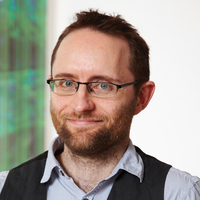Tom Lyons

ESERO-UK Teacher Fellow, working for STEM Learning, York. Using the context of space to inspire STEM teaching and learning. Teacher of physics, satellite engineer, father of two.
Location York
Activity
-
Hi Jahan. I think you are right that it would be good for them to also see more recent data.
-
Tom Lyons made a comment
Hi everyone. I will be joining you over the next few weeks as an Educator on this course, along with Catherine Daly. I am the STEM Enrichment Lead, at STEM Learning. My role includes leading on the educational content for ESERO-UK, STEM Clubs and other competitions and challenges. I look forward to reading your comments and supporting on this course.
-
Tom Lyons replied to David Bradley
Hi David. I agree that it is best to try to understand and examine the arguments from different stand points. Since there are so many variables influencing climate, and so many arguments, it makes it a complex matter and you could write another whole course about it.
-
Tom Lyons replied to Ron Hughes
Hi Ron. You are right that making a direct causal link between extreme weather events and climate is not trivial. However, in another IPCC report https://www.ipcc.ch/site/assets/uploads/sites/3/2019/11/10_SROCC_Ch06_FINAL.pdf they state " Collectively, these studies show that the role of climate change in the ocean and cryosphere extreme events is...
-
Tom Lyons replied to Maria Gagkou
So that I could add an image, I've posted a reply in the carbon cycle padlet https://padlet.com/stemonlinecpd/ne213_carboncycle
-
Tom Lyons replied to Aimee Howard
Yes - except for islands of rubbish :) All land is really just the parts that poke up above sea level and that is changing all the time with rising sea levels but also with tectonic and volcanic activity.
-
Tom Lyons made a comment
Hi. I'm Tom, one of the Educators on the course. I'm the STEM Enrichment Lead at STEM Learning, and ESERO-UK Teacher Fellow. I'm really looking forward to supporting you through this course, over the coming weeks.
-
Tom Lyons made a comment
Hi. Good point on the updates to the space suits, Karen and Nick.
-
Tom Lyons made a comment
How do planets stay in their orbits? This question seems to be coming up quite a bit. We know gravity is the force that enables this to happen but here's a couple of ways of thinking about it. One model for this is to swing a mass (e.g. a lump of plasticine) on the end of a piece of string. The tension in the string is like the force of gravity and as long...
-
Tom Lyons replied to Leah Wright
Hi Leah. It is a question that comes up quite a bit - why spend money on space when we need to concentrate on our own planet? There's a few things that we can say in favour of space exploration: firstly, we actually spend very little on it compared to other things - the money spent on all space activities amounts to less than the cost of one cinema ticket...
-
Hi Chloé. There was a problem with the link but I think you should be able to view it now.
-
Hi Tina. You're quite right - this course was written before the pandemic. Hopefully once things are close to normal again then you will be able to test it out.
-
Hi Gillian. Gas giants are not all that gassy when you get further towards their cores, the pressure is so high that they are solid.
-
Hi Carly. If you look at the Mission to the Moon resource linked to in the next step - it includes details about this.
-
Tom Lyons replied to Gillian Fitzgerald
Stellarium is a great tool to use and can be useful in dealing with misconceptions.
-
Hi Carly. This sounds interesting. Let us know if you have a go at this.
-
Tom Lyons made a comment
Hi everyone - welcome to the course. It's great to see that we have some keen learners already commenting. We really like to read your comments and questions - so keep them coming over the next few weeks.
-
Tom Lyons made a comment
Hello, and welcome to the course. Please ask if you have any questions throughout. We really welcome your ideas and comments so don't forget to post and interact with one another along the way.
-
Tom Lyons replied to Petra Pikula
Hi Petra,
There are also a few challenges and competitions from ESA - the dates are all listed on this post https://www.esa.int/Education/Teachers_Corner/2019-20_ESA_Education_School_Projects -
Tom Lyons replied to Petra Pikula
@PetraPikula Yes - there are lots of other suns like our own but also much bigger ones and smaller ones - stars come in a huge range of sizes. There is a boundary, called the heliopause which will change depending on the size and luminosity of the star. We have evidence of water channels on Mars - so we think it is highly likely that water flowed on the...
-
Tom Lyons replied to Petra Pikula
Hi Petra. Scientists think there are billions of solar systems out there. The closest solar system from our own in Proxima Centauri B, which is 4.25 light years away - it would take thousands of years for us to get there with current technology. The boundaries of a solar system can be defined in different ways but essentially it includes any object that...
-
Hi Zoe,
Have you tried advertising through STEM Ambassadors https://www.stem.org.uk/stem-ambassadors/find-a-stem-ambassador. Also, there may be opportunities through Techniquest. -
Sounds like a great lesson!
-
Hi Petra, The activity we have in the Mission to the Moon resource uses sand, water and some glue to make lunar bricks. You could also use junk modelling (e.g. waste cardboard boxes and bottles).
